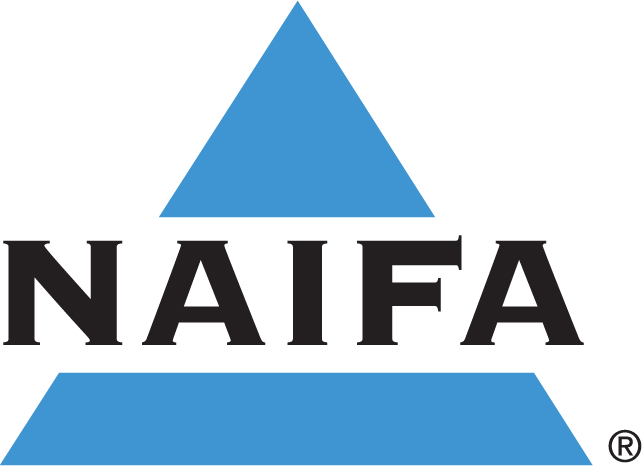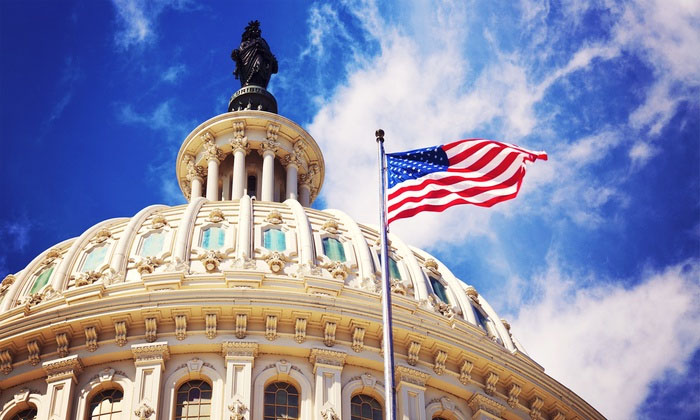This special NAIFA webinar provided Paycheck Protection Program updates and information on COVID-19 amendments to the Family Medica Leave Act that insurance and financial professionals need to know. NAIFA members may view the webinar on-demand. If you are not a NAIFA member, please join.
Diane Boyle
Senior Vice President of Government Relations, NAIFA
Congress has passed three phases of COVID-19 relief and recovery legislation, Boyle said, including an initial response and vaccine funding (Phase 1); the Families First Coronavirus Response Act (FFCRA) that included unemployment and worker-assistance programs (Phase 2); and the CARES Act, including a $2 trillion economic stimulus package, support for large industries, and the Paycheck Protection Program (PPP) small business loans. Phase 3b, legislation that became law in late April and early July, expanded the PPP and implemented some fixes and modifications of that program. Phase 4 is now in negotiations among congressional leadership and the White House.
Phase 4 will potentially include:
- Infrastructure spending (Republican support)
- Liability protections for businesses (Republican support)
- A payroll tax cut (Republican support)
- PPP reforms (Republican support)
- State and local government funding (Democratic Support)
- Hazard pay for essential workers (Democratic Support)
- Vote-by-mail programs (Democratic Support)
- Stimulus checks and/or expanded unemployment benefits (Democratic Support)
Robert Keebler
Partner, Keebler & Associates
Since the original PPP was create, Keebler said, additional legislation has changed some of the limitations and requirements. The Paycheck Protection Program Flexibility Act:
- Changes the maturity term for PPP loans to five years.
- Extends the coverage period of the loans from eight weeks to 24.
- Reduces the amount of the loan that must be spent on payroll from 75% to 60% for employers to receive forgiveness.
- Extends the deadline by which loan recipients seeking forgiveness must re-hire full-time equivalent employees from June 30 to Dec. 31.
- Creates an exemption for employers who can show they are unable to rehire employees or hire similarly qualified employees.
- Allows borrowers to defer half of their Social Security and Medicare taxes.
Generally, PPP borrowers must have fewer than 500 employees, and that hasn’t changed, Keebler says, but there are exceptions.
“If somebody on the second round has six- , seven- , or eight-hundred employees, don’t just give up,” he said. “Try to see if they qualify under one of the other exceptions.”
To get PPP loans forgiven, borrowers must spend 60% of the funds on payroll. Under the program, payroll includes: salary, wages, commissions, and tips; paid leave; healthcare payments; and retirement benefit payments. Payroll does not include: compensation of an individual in excess of $100,000 or qualified sick leave or family leave wages eligible for tax credits under the FFCRA.
PPP forgiveness also prohibits employers from reducing the salary or wages of worker making less than $100,000 a year by more than 25%. This can be “cured” if the salaries or wages are restored.
Recipients are allowed to use PPP loans to pay payroll costs, group health benefits, interest on mortgage obligations, rent, utilities, and interest on business debts incurred before the coverage period. For forgiveness, 60% must go to payroll. The loans require no personal guarantees or collateral and there is no requirement that borrowers be able to obtain credit elsewhere. The loans are nonrecourse, unless they are used for unauthorized purposes.
PPP loans do require good faith certification that the recipient needs the loan to support ongoing operations, though the requirement is waived for loans of less than $2 million. It is important that recipients of loans over $2 million must be prepared to meet a necessity challenge.
Business may be able to receive both PPP loans and Small Business Administration economic injury disaster loans, but an EIDL grant reduces the PPP recipient’s forgiveness eligibility.
Loans originated before June 5 have a term of two years that may be extended to five years by mutual agreement of the recipients and the lenders. Those originated after June 5 have a term of five years. All loans have a 1% interest rate. It is crucial for borrowers to submit forgiveness applications within 10 months of the loans’ covered period. Late applicants for forgiveness will have to make payments, Keebler said. “It’s a big country, so somebody is not going to submit on time,” he said. “Just be very careful that that is not someone you’re representing.”
Payroll costs, mortgage interest, rent, and utilities during the 24 weeks after the loan is originated (increased from 8 weeks in the original PPP) up to the loan amount are eligible for forgiveness. However, the 24-week period may not extend into 2021.
PPP recipients who don not retain the same number of full-time employees, cut salary too much, or don’t have 60% of covered expenses in the payroll category will lose some of their forgiveness.
Problems with the full-time employee test and salary test can be fixed under the PPP Flexibility Act if an employer can document an inability to rehire or hire similarly qualified employees or if the employer is unable to return to a prior level of business activity because of COVID-19 safety requirements.
Julie Steed Kammer
Attorney, Staines, Eppling & Kenney LLC
COVID-19 legislation creates obligations and benefits for small business employers, Kammer said, including employers who may not normally fall under the Family Medical Leave Act (FMLA) or Americans With Disabilities Act (ADA).
The FLMA is designed to allow employees to take up to 12 weeks of unpaid leave for health-related reasons without losing their jobs. It applies to employers with 50 or more employees within a 75-mile circumference. However, the Families First Coronavirus Response Act (FFCRA) applies to 99% of all small businesses, including many that employ fewer than 500 employees.
The FFCRA applies to employers with fewer than 500 employees. Employees must have worked for at least 30 days to be eligible for full benefits.
The FFCRA covers employees unable to work because they are under a quarantine order issued by a government or health care provider, experiencing COVID-19 symptoms and seeking medical treatment, must care for an immediate family member under quarantine or experiencing COVID-19 symptoms, or must care for a child whose school or care is closed due to COVID-19.
The legislation entitles quarantined employees or those seeking medical care two weeks of sick leave at their full rate of pat. If entitles those caring for family members to two weeks of sick leave at two-thirds pay. These benefits are in addition to paid sick leave benefits an employer may already provide. For employees providing childcare, those who have not worked 30 calendar days receive two weeks of leave at two-thirds pay. Those who have worked for at least 30 days are entitled to two weeks of unpaid leave and up to an additional 10 weeks of paid leave at two-thirds pay.
The FFCRA sunsets Dec. 31, 2020, but they may be extended, Kammer said.
The Act also includes employer protections. Employees may only use the paid leave benefits once, even if they or a family member is affected by COVID-19 multiple times. The benefits are not in addition to the regular 12 weeks of leave provided under the FMLA. If employees are able to telework and are able to work, they cannot elect to take leave.
Paid leave provided under the FFCRA for employee quarantine leave is capped at $511 per day and $5,110 total per employee. Paid leave for all other types of leave under the FFCRA is capped at $200 per day and $10,000 total per employee. Employers are eligible for dollar-for-dollar tax credits against payroll taxes to cover paid leave under the act and may receive refunds if credits exceed their tax liability. Employers also may be able to get advance payment on the credits. Employers may also make a case to the Department of Labor for exemption from FFCRA obligations in cases of undue hardships.
The ADA applies to private employers with 15 or more employers as well as employers that are federal contractors or subcontractors or that receive federal assistance. PPP loans do not count as federal assistance, but some other forms of government assistance that businesses have used during COVID-19, including federal disaster loans, are.
Generally, COVID-19, unless it requires hospitalization, probably does not qualify as a disability under the ADA, Kammer said. However, lasting effects of COVID-19, such as acute respiratory syndrome, organ failure, vascular damage, brain damage, and post-traumatic stress, might.
Employers should have a written plan based to CDC and government guidelines when they decide to return employees to the workplace. When it comes to worker’s comp and liability issues, Kammer said, “State laws are going to determine whether or not you have tort immunity if someone is exposed.”
Many states are likely to protect employers from tort liability as long as the employers comply with government COVID-19 safety procedures, Kammer said, but it is important to confirm this with an attorney familiar with the laws and regulations in your state.







